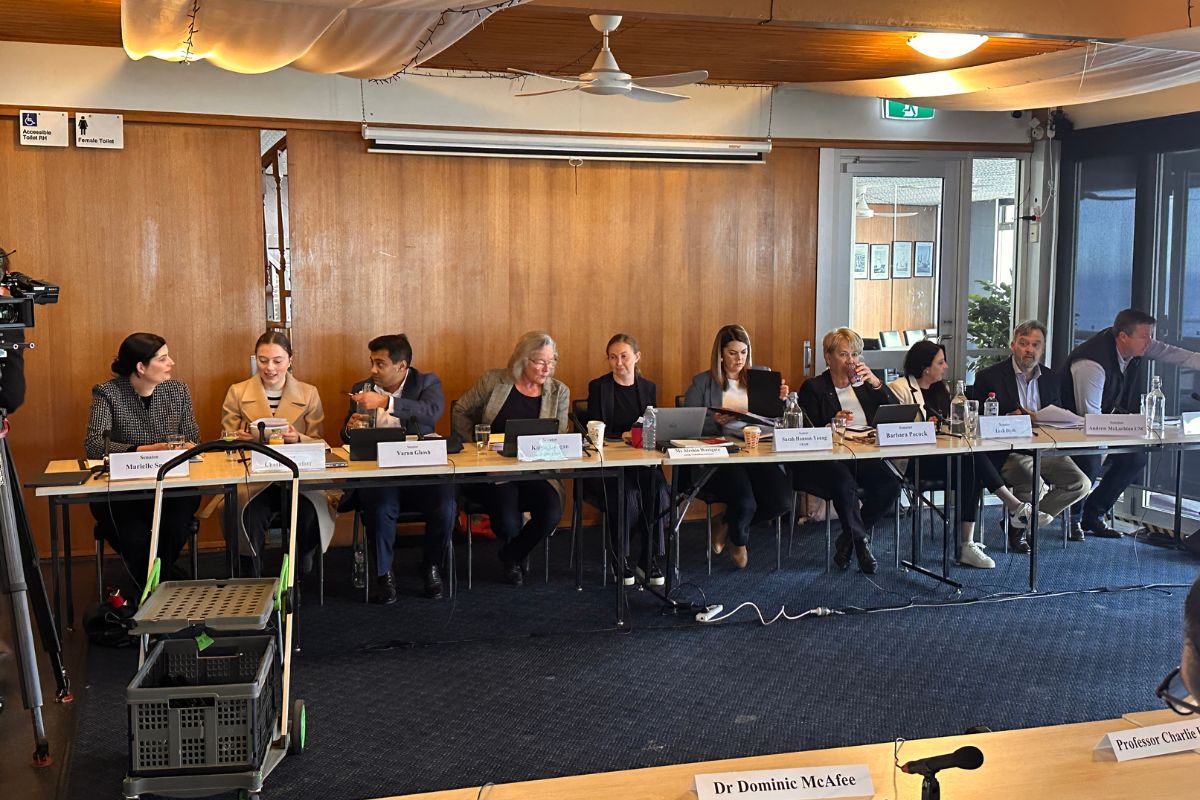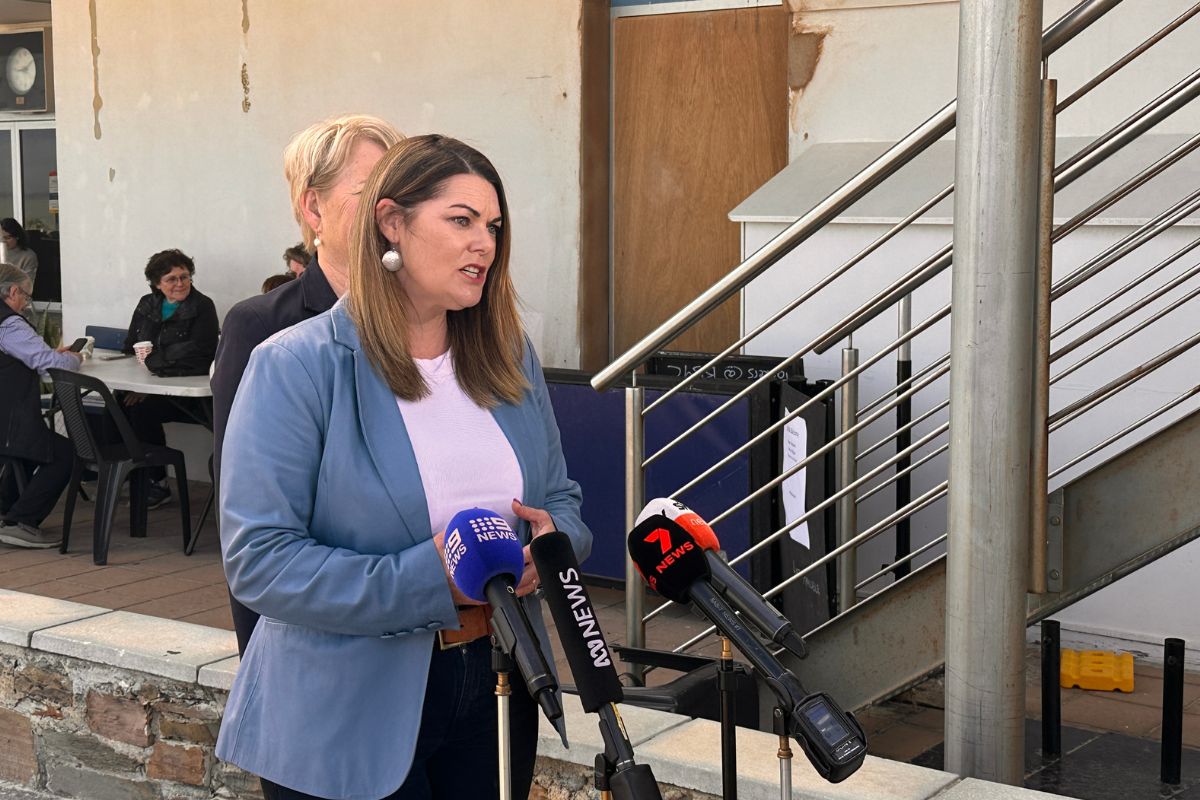Top scientists blame ‘chronic’ underfunding for algal bloom gaps
Five top scientists are calling for immediate new funds to fix critical gaps in algal bloom data. At the first federal inquiry public meeting in Seacliff, they called for more than $40 million to tackle the problem first flagged two years ago.

The leading marine scientists today told the first hearing of the Federal Senate’s inquiry into South Australia’s algal bloom that the current disaster unfolding in South Australia needed a vital boost in marine ecosystem monitoring funding.
An initial injection of $6 million would help with short-term projects to take full advantage of researching the ongoing harmful algal bloom causing mass marine deaths off South Australia’s coast, they said.
A further $40 million long-term investment in marine monitoring would then enable scientists to continue assessing the impact of the current algal blooms on the undersea ecosystem. The scientists told of calls for more government funding for monitoring that were first made back in 2023.
Great Southern Reef Foundation co-founder Stefan Andrew said the algal bloom had caused the “most extensive marine mortality recorded in South Australia”.
“Yet we still don’t know the true underwater impact because biodiversity monitoring is underfunded and fragmented,” Andrews said.
“Australia has been a leader in developing biodiversity monitoring methods, but chronic underfunding means programs and long-term reef surveys cannot deliver the data needed to measure impacts.”
Great Southern Reef Foundation’s submission to the inquiry called for $46 million of funding to “kickstart a coordinated framework”.
The Federal Senate’s inquiry into the South Australian algal bloom crisis held its first public meeting at Brighton and Seacliff Yacht Club with inquiry chair Senator Sarah Hanson-Young and deputy chair Senator Karen Grogan overseeing proceedings.
Senators Marielle Smith, Charlotte Walker, Varun Ghosh, Barbara Pocock, Leah Blyth, Andrew McLachlan and Ross Cadell were also in attendance.
You might like

Five respected SA researchers took questions: University of Adelaide marine ecologist Dr Dominic McAffee, Flinders University marine ecosystem expert Professor Charlie Huveneers, Great Southern Reef Foundation co-founder Stefan Andrews, Australian Marine Sciences Association SA vice president Dr Georgina Wood and president Dr Craig Styan.
Andrews’ position was supported by Huveneers, who said the monitoring system in South Australia was “unprepared” for the algal bloom.
“Australia is unprepared for extreme marine events”, he said.
“At present, we cannot even assess the true impact of these kinds of events on the marine ecosystem because we lack the necessary baseline data,” he said.
“How can we tell you what has changed? We do not even know what was there to begin with.
“Australia must invest in more marine biodiversity and monitoring.”
There is a “disproportionate” focus on tropical reef systems, Huveneers said, with substantial money given to Great Barrier Reef monitoring.
“Yet monitoring southern waters is largely ad hoc and fragmented,” he said, noting a coordinated framework would “ensure that when extreme events occur, you have the capability, expertise and data to respond effectively”.
“Without stronger monitoring, planning and collaboration, South Australia and Australia will remain unprepared for the impact of climate change on our modern environments,” he said.

Funding calls date back to 2023
Stay informed, daily
The inquiry also heard that the Great Southern Reef Foundation first called on then-Federal Environment Minister Tanya Plibersek for the $40 million of support in 2023 via a letter, which also warned that marine heatwaves could impact southern waters.
Andrews, one of the letter’s signatories, said the letter “took quite some time to get a response”, and when one was received, it focused on federal investments in restoration work.
“Restoration is great, but it’s better to not have to be restoring a degraded system in the first place,” Andrews said today.
He said the initial letter’s requests were not addressed, and the group then sent another to the current Environment Minister Murray Watt this year, in response to the early impacts of the bloom.
Again, the group called for the $40 million coordinated monitoring program and received a response “with a similar tune around federal investments towards restoration”.
The money would help scientists “understand across the range of the distribution of various species that may be impacted so we can understand that level of how threatened they may be by these kinds of events”, Andrews said.
“We have, in our submission, called for an immediate $6 million investment. This can kick-start that $40 million program.
“This will help understand big picture what’s going on and help address these questions.”
Asked by Grogan whether any of the joint state and federal $34 million funding could cover this monitoring program, Andrews said the money would “provide a framework to help coordinate the currently existing programs right across the Great Southern Reef”.
“To harmonise those efforts so it’s not fragmented and it’s not sporadic based on when funding is available,” he said.
“So we’ll have consistent and ongoing monitoring across a wider range of sites, including more remote areas.”

University of Adelaide’s Professor McAfee said the response required a “whole of society” response, from all levels of government.
“Industry and the public have a really important role to play,” he said.
“We need rigorous offshore scientific diving programs, there’s a lot the public can do on the foreshore as well and that’s what we’ve seen over the last few months – the most comprehensive database we have will be generated by citizen scientists walking the beach.
“Community needs to be supported to play an active role in some of this work.
“But absolutely, we need to move beyond the short-term funding cycles which typically underpin most of our scientific surveys.”
Public hearings head to Port Lincoln tomorrow, Ardrossan on September 11 and Victor Harbor on September 12.











